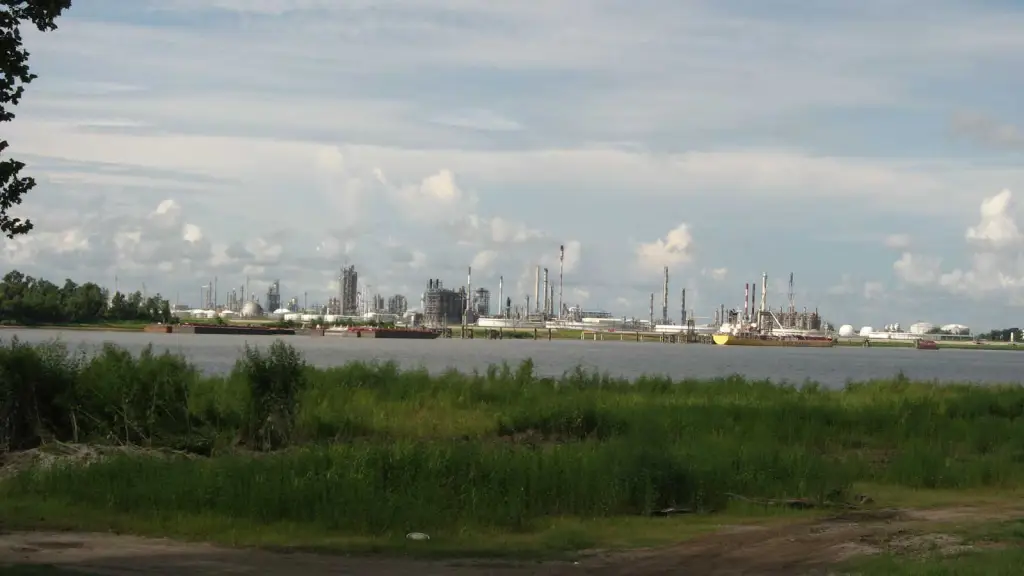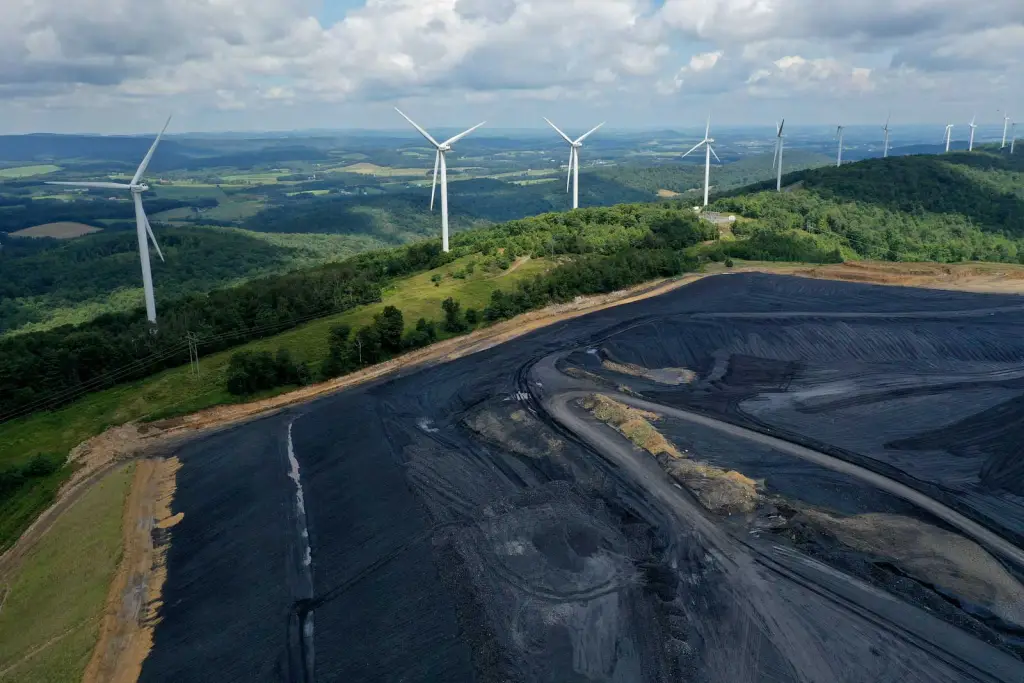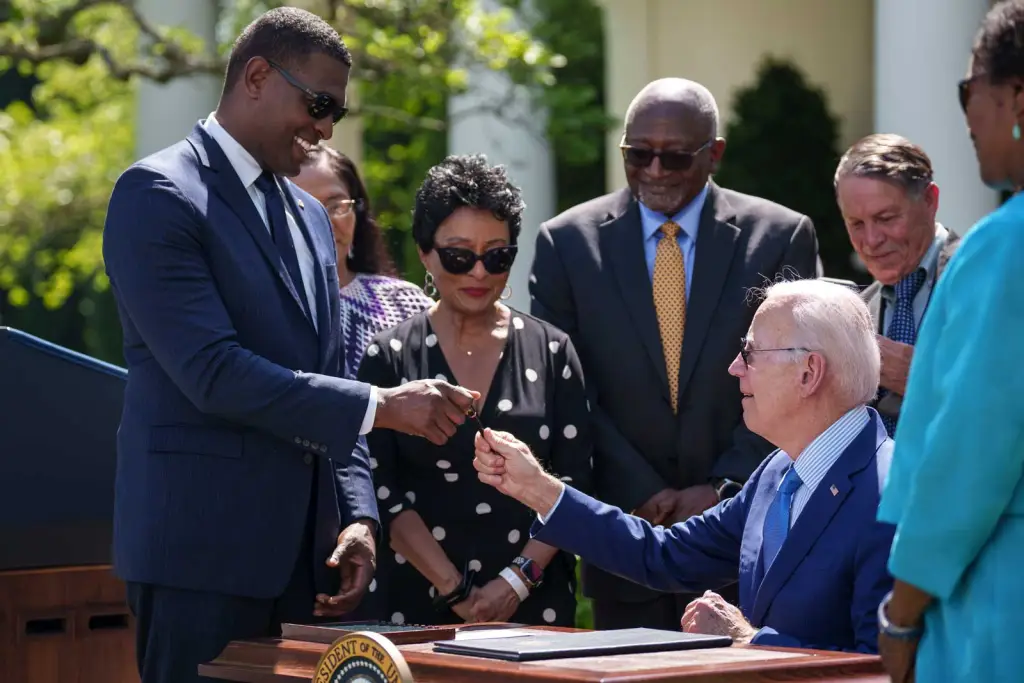With President Joe Biden’s election came a slew of promises related to climate justice: During his campaign, Biden made commitments to reduce oil and gas drilling, transition the country toward renewable energy and electric vehicles, and center environmental justice in all aspects of federal climate policy and finance. And since his election, his administration has set its sights on communities in Appalachia, along coastlines, and the Gulf South, all regions that are both unprepared for climate change and expected to be hit hard.
Halfway through the term, how is the Biden presidency doing on its climate justice commitments? We asked organizers and experts across the U.S. South and Appalachia to share their communities’ priority areas and offer feedback. We then used that information to grade the administration on a scale ranging from “A” for awesome to “D” for disastrous. Bottom line: Despite the administration’s notable accomplishments, many in the Gulf Coast, Appalachia, and mid-Atlantic remain concerned about what the next two years will mean for climate justice in their communities and across the U.S.
General concerns: Where advocates say Biden’s climate justice policies are falling short
Over the last two years, major federal legislation like the American Rescue Plan Act, the Infrastructure Investment and Jobs Act—also known as the Bipartisan Infrastructure Bill—and the Inflation Reduction Act have signaled a new era for climate investment. Paired with the Justice40 Initiative, which stipulates at least 40% of the benefits from the federal investment will be directed toward historically disinvested communities, the last two years have also marked an unprecedented moment for environmental justice.
“We are in a very pivotal moment in history. The historic amount of funding is the largest we’ve ever received in the history of the country,” said La’Meshia Whittington, North Carolina native and president of the WSC group, a state and national firm that focuses on environmental justice, sciences, and natural resources management.
In the first four months of 2023 alone, the Department of Energy, the U.S. Department of Agriculture, and the Environmental Protection Agency, among others, announced millions of dollars in funding for environmental justice and energy infrastructure deployment.
But Peggy Shepard, co-founder and executive director of WE ACT for Environmental Justice—one of the most well-known environmental justice advocacy organizations in the U.S.—raised concerns that although 40% of clean energy investments are going to frontline communities, approximately 60% of those funds are being directed through states rather than to community organizations or municipalities directly. In addition, many of the communities with the greatest need don’t have much capacity or the connections needed to apply for grants, Shepard and other advocates warned.
“The good news is that there are billions of dollars going out into communities,” Shepard said in a press briefing. “The bad news is, are those communities ready to access those funds?”
Bryan Parras, longtime Houston-area environmental justice advocate and son of White House Environmental Justice Advisory Council member Juan Parras, said the South and the Gulf Coast remain industry hot spots, home to heavily polluting oil and gas extraction and refining.
“It’s hard to say with certainty if it’s been a complete wash or if these communities will see real progress. I think that’s still to be determined,” Parras said.
Parras described a resounding community concern at the collection of executive orders and bills colloquially known as the Biden climate package. One of the primary concerns, he said, was that the benefits and incentives associated with bills like the Inflation Reduction Act—carrots encouraging the industry to convert to renewable energy or invest in electric vehicle infrastructure—were likely to disproportionately benefit affluent and Whiter communities.
“We just kind of had to celebrate [the climate package] because that was the best we were going to get. I think it left a bad taste in a lot of people’s mouths. It felt like a betrayal,” Parras said.
Part of the problem lies in how initiatives like Justice40 were set up. A Biden executive order signed in early 2021 created Justice40, which seeks to direct federal money to “disadvantaged communities that are marginalized, underserved, and overburdened by pollution.”
The federal Justice40 Initiative borrows heavily from a similar program established in New York state in 2019. New York’s Justice40 Initiative includes language that ensures climate spending across the board cannot disproportionately burden frontline communities, which are communities that have historically felt the brunt of environmental harms. The program also prioritizes cutting carbon pollution in frontline communities.
But Raya Salter, founder of the Energy Justice Law and Policy Center and member of New York State’s Climate Action Council, said similar provisions were not explicitly outlined in the federal initiative.
“New York actually has a lot of other things designed to make sure this money goes in the right direction. They’re the type of guardrails that we need to see on the federal level and that does not exist right now,” Salter said.
“Frankly, I am wildly concerned that not only will these funds not go to community reinvestment, but that they will actually make things worse.”
Establishing a Corporate “Good Neighbor” Policy

Petrochemical facilities line the Mississippi River near Norco, Louisiana, in 2009. (Photo credit: Ken Lund / CC BY-NC 2.0)
One of the biggest critiques of Biden’s climate agenda from Southern advocates has been a missing stick—such as more stringent regulations on air and water pollution—to match the numerous carrots contained in the climate package. In the case of Cancer Alley in Louisiana and Texas—a stretch along the Mississippi River that hosts about 25% of the U.S. petrochemical production—or the recently approved Willow project in Alaska, this has meant the expansion of drilling and exploration for oil and gas in communities that were promised a reprieve from industry pollution.
Salter said this lack of regulation in favor of tax breaks extends to other parts of the Gulf South as well. She used her father’s family land—where her great-grandparents farmed and her grandmother was born and raised—in rural Conecuh County, Alabama, as an example. “[It’s] now Alabama’s largest oil field,” she said.
Many Black families like Salter’s, located in the Black belt of Alabama, are contending with encroachment from the oil and gas industry, exacerbated by provisions in the Inflation Reduction Act added by Democratic Sen. Joe Manchin of West Virginia that require the federal government to auction certain oil and gas leases.
Salter said that as a result of those provisions, people like her family feel as though they’re facing an ever-emboldened industry. “And we’re standing up against them alone, without the help of Mr. Biden, who’s supposed to be our champion,” she said.
Organizers in Appalachia are also pushing federal agencies to do their fair share in upholding the Biden administration’s promises. Lauren Kallmeyer, director of Kentucky Heartwood, a nonprofit dedicated to preserving Kentucky’s native forest lands, said that despite the passing of an executive order to strengthen the nation’s forests last year, the Forest Service has continued to clear-cut critical Appalachian wilderness.
“What we’re seeing in our national forest is some of the most dramatic and biggest logging projects that we’ve seen in a long time,” Kallmeyer said.
The climate impacts of these decisions are significant: Not only do old-growth forests sequester significant amounts of carbon pollution, but disrupting the mountain landscape could exacerbate severe flooding events.
“The government definitely needs to be doing more. They’re talking out of both sides of their mouth,” said Russell Armstrong, policy director of climate and environment for the Hip Hop Caucus, a national social justice organization. “And that creates a trust issue with frontline communities. We need stronger regulations.”
Developing a Holistic and Inclusive Clean Energy Transition Through Effective Allocation of Resource Dollars

In an aerial view, turbines from the Roth Rock wind farm spin on the spine of Backbone Mountain next to the Mettiki Coal processing plant on August 23, 2022, in Oakland, Maryland. The 50,000-kilowatt Roth Rock project has 20 Nordex N90/2500 turbines and has been operating since 2011. Once Maryland’s largest coal mine, the Mettiki pulled a total of 55 million short tons from the Upper Freeport seam in Garrett County’s southwestern corner between 1983 and 2006, when the mine was closed. Today, the former mine site still washes, separates and processes coal from nearby mines. (Photo by Chip Somodevilla/Getty Images)
“The definition of insanity is doing the same things over and over again and expecting different results. If we want a different world, we’re going to have to do things a different way,” said Amanda Woodrum, co-director of ReImagine Appalachia, a coalition focused primarily on the Ohio River Valley region of Appalachia. She was referring to the continued use of funding streams—such as infrastructure dollars funneled through state revolving funds and grant and loan programs—that have not previously worked to get project funding to those on the ground and in greatest need.
“Appalachia has operated from a place of scarcity and poverty for nearly a century, and it’s not used to thinking big,” Woodrum said. Like many other organizations across the country, ReImagine Appalachia is working with limited resources and capacity to participate in federal funding opportunities. She pointed out that, like in many historically disinvested parts of the country, Appalachia isn’t prepared with the sort of “shovel-ready” projects that more affluent parts of the country have.
Whittington highlighted a similar dynamic in North Carolina. “The historic funding that is coming is amazing. But government was not prepared to disseminate funding in a clear, comprehensive way to communities because there isn’t a grassroots organizing faction of state government departments.”
Prioritizing Community Concerns
The federal climate package in other ways has been a boon to communities across the country. Jigar Shah, director of the U.S. Department of Energy Loan Programs Office, said in a press briefing that most of the proposed energy project sites—approximately 161 proposed projects like solar farms or wind energy investments—are next to disadvantaged communities. He said that his office’s emphasis has been on making sure the benefits of renewable energy investment are made available to the same communities that have historically been harmed by energy generation.
But Alexis Parker, lead organizer for the New Georgia Action Fund for Environmental Justice, said energy costs also need addressing. Five Southern states, including Georgia, have the nation’s highest low-income energy burden, meaning the households with the lowest income are also spending the most on their energy bills. This problem results from rising temperatures in the deep South and historical infrastructure and building disinvestment that has left many residents with homes that are not properly insulated.
“There aren’t programs in place that have enough funding to help offset these bills for people,” Parker said.
Armstrong with the Hip Hop Caucus also noted that it’s critical for communities to have input in the distribution of federal funds, ensuring that industries such as carbon capture and storage, biogas/biomass, or green hydrogen facilities can’t use the federal grants to set up shop against the wishes of residents.
“The administration is a frustrating one,” Armstrong said. “There’s some of the largest proposed benefits that we’ve ever seen, while at the same time, they’re shooting themselves in the foot. It’s two steps forward, one step back.”
Enshrining and Acknowledging Environmental Justice in Federal Policy

U.S. President Joe Biden gives a signing pen to EPA Administrator Michael Regan (L) after signing an executive order that would create the White House Office of Environmental Justice, in the Rose Garden of the White House April 21, 2023, in Washington, D.C. The order directs federal agencies to invest in communities that are disproportionately affected by pollution and climate change. (Photo by Drew Angerer/Getty Images)
Advocates roundly praised the Biden administration’s infusion of environmental justice in national policy priorities.
In April 2023, Biden once again expressed his commitment to addressing environmental injustice countrywide with a new Environmental Justice for All executive order. The order builds on other environmental justice commitments such as Justice 40 and the announcement of a new Department of Environmental Justice and External Civil Rights to cement environmental justice within the federal government.
“I would say this administration has moved further on the structural recognition of environmental justice than any previous administration ever has,” Energy Justice Law and Policy Center founder Raya Salter said. She added that whether that recognition translates to “rubber hitting the road” remains to be seen, noting a greater need for Congress and other agencies to step up and prioritize environmental justice.
North Carolina activist La’Meshia Whittington called particular attention to individuals like EPA administrator Michael Regan for their individual leadership in moving historic policy and doing so within a flawed system that they did not construct. But she also noted that acknowledgment needs to be matched by deliberate efforts to address a history and system of community exclusion and corporate prioritization: “The federal government has a responsibility to set a precedent to be courageous,” she said.
Republished with permission from Yale Climate Connections, by

Yale Climate Connections
Yale Climate Connections is a nonpartisan, multimedia service providing daily broadcast radio programming and original web-based reporting, commentary, and analysis on the issue of climate change, one of the greatest challenges and stories confronting modern society.
Since the fall of 2007, Yale Climate Connections has aimed to help citizens and institutions understand how the changing climate is already affecting our lives. It seeks to help individuals, corporations, media, non-governmental organizations, government agencies, academics, artists, and more learn from each other about constructive “solutions” so many are undertaking to reduce climate-related risks and wasteful energy practices.
